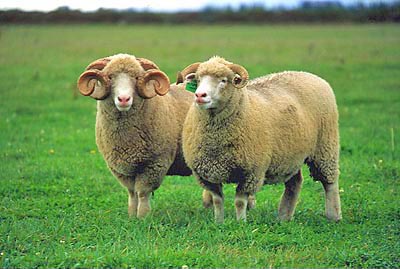Type the name of the breed you're looking for below
[wpdreams_ajaxsearchlite] Don't see the breed your're looking for? Click here and let us know!
Dorset Horned sheep
| Place of Origin | United States |
| Origin | The Dorset or Dorset Horned breed of sheep is known mostly for its prolific lambing. It has been known to produce two lambing seasons per year: bred in May for lambs finished by the holidays, and bred again immediately after the first lambing to produce again in March or April. This type of management, the ewes sold with the lambs, sometimes produces as many as four or five lambs a year. The Cornell University Sheep Program developed and teaches the STAR system to promote frequent lambing with Dorsets. Cornell maintains a research and teaching flock five miles south of Dryden, New York, USA. The Polled Dorset originated in a herd at North Carolina State University, Raleigh, North Carolina, and a registry of the polled Dorset was established in 1956. Since then the polled breeders have outnumbered the breeders of the horned variety. |
| Purpose | Meat |
| Characteristics | The Dorset has a white face with close short fleece. It has a solid build, with broad back and short legs. Originally, both rams and ewes had horns. Both horned and polled Dorsets are all white sheep and medium size having good body length and muscle conformation to produce a desirable carcass. The fleece is very white, strong, close and free from dark fiber. Fleeces average 5 to 9 pounds (2.3 to 4.1 kg) in the ewes with a yield between 50% and 70%. The staple length ranges from 2.5 to 4 inches (6 to 10 cm) 2.5 inches (6 cm) to 4 inches (10 cm) with a numeric count of 46's-58's. The fiber diameter ranges 33.0 to 27.0 microns. Ewes weigh 150 to 200 pounds (70 to 90 kg) at maturity, some in show condition may very well exceed this weight. Rams weigh 225 to 275 pounds (100 to 120 kg) at maturity. |



